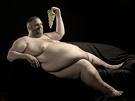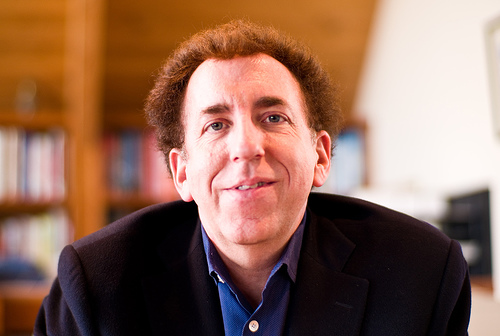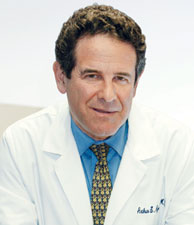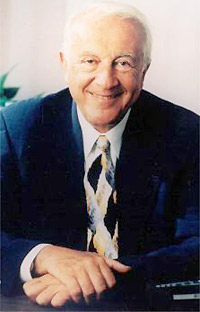Obesity is Widespread


Obesity is Widespread
Dieters live life in the fasting lane.
I’m going to jump feet-first into the low fat vs. low carb diet controversy and let you know what I discovered. The first fact was mind-blowing. Did you know that the United States has become obesogenic?
Obesogenic – that’s a relatively new five-dollar word that means characterized by an environment that promotes increased intake of food, most of it not healthy, accompanied by physical inactivity. In other words, obesity is really widespread.
Yes, it’s true. In America as well as other developed countries, we live in an increasingly obesogenic – I love that word – environment with plentiful fast food outlets and constant bombardment on TV, radio, newspapers and magazines enticing us to eat more and larger portions of ready-to-go prepared foods chock full of fats and sugar. Obesogenic refers to foods more likely to cause obesity and to round out your vocabulary, the opposite is leptogenic as in leptogenic drugs that aid in weight reduction.
Fried Oreos and Fried Winkies
So, just how fat are we?
The CDC - Center for Disease Control and Prevention – provided statistics illustrating that in 2007-2008 the prevalence of obesity was 32.2% among male adults and 35.5% among female adults. That’s a lot of avoirdupois – the French know how to make “fat” sound pretty. Watch this video and see the U.S. statistics for yourself.
United States Obesity Statistics by States

Here is another scary fact I learned. A new study shows that obesity now poses as great a threat to our quality of life as smoking. Researchers at Columbia University and The City College of New York analyzed 1993-2008 data that included interviews with more than 3.5 million adults. The results showed that the quality-adjusted life years lost to obesity are equal to, or greater than those lost because of smoking. During that same period the number of adult smokers decreased 18.5 % and the proportion of obese Americans increased 85 %. Seems to be a correlation there, doesn't it?
Finding and staying on an appropriate diet plan is more important than ever. Let’s take a look at some of the most popular diet plans available today:
> the Low Fat Ornish Diet
> the neither Low Fat nor Low Carb South Beach Diet
> the Low Fat Low Carb Mediterranean Diet.
> the Low Carb Atkins Diet.

Books by Dr. Ornish
The Low Fat Ornish Diet
Dean Michael Ornish, M.D. (July 16, 1953) is president and founder of the nonprofit Preventive Medicine Research Institute in Sausalito, California and Clinical Professor of Medicine at the University of California, San Francisco. Ornish is well known in the medical community because of his success in reversing blockages to the heart, once thought impossible without surgery or drugs. He is the author of Eat More, Weigh Less.
The Ornish diet, low in fat and high in fiber, provides you with lists of foods you may “eat freely” all of the time; foods you may “eat moderately” some of the time, and “banned” foods none of the time. If you observe these instructions, you can eat all you want without counting calories or portion sizes.
The following foods can be eaten whenever you are hungry, until you are full: beans and legumes; fruits – anything from apples to watermelon, from raspberries to pineapple; grains; and all types of vegetables.
These foods should be eaten in moderation: nonfat dairy products -- skim milk, nonfat yogurt, nonfat cheeses, nonfat sour cream, and egg whites; nonfat or very low-fat commercially available products --from Life Choice frozen dinners to Haagen-Dazs frozen yogurt bars and Entenmann's fat-free desserts. Caution: if sugar is among the first few ingredients listed on the package, return it to the shelf.
These foods should be avoided: meat of all kinds – red and white; fish and fowl (if you simply can't give up meat, then eat as little as possible);oils and oil-containing products, such as margarine and most salad dressings;avocados; olives; nuts and seeds; sugar and sugar derivatives – honey, molasses, corn syrup and high-fructose syrup; alcohol. And anything commercially prepared that has more than two grams of fat per serving
That's it. If you stick to this plan, you will meet Ornish's recommendation of less than 10% of your calories from fat, without the need to count fat grams or calories. Ornish suggests eating a lot of little meals because this diet makes you feel hungry more often.
In his book he states, “I’d love to be able to tell people that bacon and eggs are health foods, but they’re not.”
Ornish's regimen is more than mere diet. He insists that dieters incorporate at least 30 minutes of moderate exercise a day, or an hour three times a week, and include some kind of stress- management technique such as meditation, massage or yoga.
I’ve found from personal experience that the very first thing you lose on a diet is your sense of humor.

Books by Arthur Agatston, M.D.
Not Low Fat. Not Low Carb. The South Beach Diet
Arthur Agatston, M.D. is a physician and cardiologist who is the director of the Non-Invasive Cardiac Lab at Mount Sinai Medical Center aand Miami Heart Institute in Miami Beach, Florida, and the director of Beach Preventive Cardiology. He is the author of The South Beach Diet: The Delicious Doctor Designed, Foolproof Plan for Fast and Healthy Weight Loss.
The South Beach Diet is one of the newest in a series of diet plans but it is not low fat. Nor is it low carb. The principles of the South Beach Diet are not new, they are tried and tested. This diet teaches you to rely on the right carbohydrates and the right fats - the good ones. As a result, you can lose weight, lower your cholesterol, reduce the risk of heart disease and diabetes, and eliminate cravings without feeling hungry. Some call it the “updated version of the Atkins diet.”
This diet appears to be scientifically based and is rich in vegetables, fruits, whole grains, and lean protein, and doesn't omit any major food groups. Agatston says that after two weeks, most participants in the South Beach Diet are 8 to 14 pounds lighter. He notes the weight loss does not happen because participants eat less, but rather because eliminating simple carbohydrates has broken a bad eating cycle. As a result, people continue to lose weight after the initial two-week period.
Phase 1 - the strictest phase of the diet, lasts 14 days. During this phase, you eat normal-sized helpings of lean meats, such as chicken, turkey, fish, and shellfish. Vegetables are also allowed, as are nuts, cheese, and eggs. The goal is to eat three balanced meals a day, and to eat enough so that you don’t feel hungry all the time.
Diet foods to enjoy include tenderloin, sirloin, skinless chicken or turkey breasts, all types of fish, boiled ham, turkey bacon, whole eggs, fat-free cheeses, peanuts and pistachios, green vegetables, legumes, canola and olive oils.
Diet foods to avoid include, beef rib steaks, honey-baked ham, breast of veal, all yoghurt, ice cream, milk including whole, low-fat, soy, and full fat cheeses, beets, carrots, corn, yams, fruits and fruit juices, all alcohol, all starchy foods such as bread, cereal, oatmeal, matzo, rice, pasta, pastries, baked goods, crackers, etc. Expected Weight Loss is 8 to13 pounds.
Phase 2 - a more liberal phase, lasts until you reach your weight loss goal. This second phase is similar to the first, but you introduce some of the banned foods from all the dietary food groups. You can start eating high-fiber carbohydrates, such as whole-grain breads, which raise your insulin levels in a much milder way that do simple, starchy carbohydrates. Additional diet foods to enjoy include most fruits, fat-free or 1 percent milk, other low-fat dairy foods, whole grain starches, barley, pinto beans and red wine.
Diet foods to eat sparingly, include: refined wheat baked goods, potatoes, beets, carrots, bananas, pineapple, watermelon and honey. Expected Weight Loss is1 to 2 pounds per week.
Phase 3 - Weight Maintenance, is an even more liberal version of the initial diet plan and lasts the rest of your life. It should be used to maintain your healthy weight. Agatston describes this phase as a “way of life.” Should your weight begin to climb, you repeat the diet plan.
I never worry about diets. The only carrots that interest me are the number you get in a diamond. -Mae West
Mediterranean Sea viewed from the coast of Turkey

The Low Fat Low Carb Mediterranean Diet
There is no one "Mediterranean" diet. Sixteen different countries border the Mediterranean Sea. Diets vary between these countries and also between regions within a country. Many differences in culture, ethnicity, religion, economy and agriculture result in different diets. But the common Mediterranean dietary pattern has these characteristics:
- high consumption of fruits, vegetables, bread and other cereals, potatoes, beans, nuts and seeds
- olive oil is an important monounsaturated fat source
- dairy products, fish and poultry are consumed in low to moderate amounts, and little red meat is eaten
- eggs are consumed up to four times a week
- wine is consumed in low to moderate amounts.
People who follow the average Mediterranean diet eat less saturated fat than those who eat the average American diet. More than half the fat calories in a Mediterranean diet come from monounsaturated fats (mainly from olive oil). Monounsaturated fat doesn't raise blood cholesterol levels the way saturated fat does. The incidence of heart disease in Mediterranean countries is lower than in the United States. Death rates are lower, too. In fact, a 2007 study conducted in the United States found that both men and women who consumed a Mediterranean diet lowered their risk of death from both heart disease and cancer.
Are you a smart shopper? Then adopting a Mediterranean diet is easy. Read food labels to see what you're really buying and putting into your body. Choose plenty of fresh fruits and vegetables, limit your intake of red meat, and eat fish at least once a week. Avoid fish that's fried or laden with butter or heavy sauces. Use healthy fats, such as olive oil and canola oil, when cooking – but only in moderation because of their high calorie content. Consider nuts as a snack or an addition to a salad. Finally, reduce or eliminate saturated fat and trans fats (also known as hydrogenated or partially hydrogenated oils) from your diet.
Here are the guidelines for the Mediterranean diet:
> Eat natural peanut butter, not the kind with hydrogenated fat added.
> Use butter sparingly. "Low fat" or "cholesterol-free" on the label doesn't mean a product is necessarily good for you. Some of these items are made with trans fats.
> Eat a variety of whole fruits and vegetables every day. Try to ultimately eat 7 to 10 servings a day. Keep baby carrots, apples and bananas on hand for quick, satisfying snacks. Fruit salads are a great way to eat a variety of healthy as well as tasty fruit.
> Use canola or olive oil in cooking. Try olive oil for salad dressing and as a healthy replacement for butter or margarine. After cooking pasta, add a touch of olive oil, some garlic and green onions for flavoring. Dip your bread in flavored olive oil like they serve you in Italian restaurants.Or spread olive oil lightly on whole-grain bread for a tasty alternative to butter.
> Season your meals with herbs and spices – not salt.
> Substitute fish and poultry for red meat and the other white meat (pork). Avoid sausage, bacon and other high-fat meats.
> Limit higher fat dairy products such as whole or 2% milk, cheese and ice cream. Switch to skim milk, fat-free yogurt and low-fat cheese.
> Eat fish once or twice a week. Water-packed tuna, salmon, trout, mackerel and herring are healthy choices. Fresh, grilled fish can taste as flavorful as chicken.. Avoid fried fish, unless it's sauteed in a small amount of olive oil.
> Keep walnuts, almonds, pecans and Brazil nuts – not peanuts – on hand for quick snacks.
> If it's OK with your doctor, have a glass of red wine at dinner with your pasta or fish. If you don't drink alcohol, you don't need to start. Drinking purple grape juice may be a healthy alternative to wine. Wine or not, with its delicious and healthy choices, the Mediterranean diet might become your favorite diet plan.
Have you ever thought about this? The United States is the country that has more food to eat than any other country in the world, and more diets to keep us from eating it.
Low carb diet beats low fat

The Low Carb Atkins Diet
Robert Coleman Atkins, M.D. (October 17, 1930 – April 17, 2003) was a physician and cardiologist best known for creating the "Atkins Diet" – a popular but controversial way of dieting that emphasizes protein and fat intake, including saturated fat; close control of carbohydrate consumption in addition to leafy vegetables; and dietary supplements. He authored Dr. Atkins’ New Diet Revolution – the Low Carb Approach.
The Atkins Diet, low in carbs and high in protein, turns your body into a fat-burning machine. Eating the right foods can improve your body’s metabolism - the process that converts food into either energy or building blocks. When you eat fewer carb foods, mostly vegetables rich in fiber, your body switches to burning fat instead of carbs as its primary fuel source.
When you digest carb foods, they convert to glucose or sugar which your bloodstream carries throughout your body. A rise in blood glucose level triggers the release of the hormone, insulin, which moderates your glucose level. So carb intake is largely responsible for blood sugar fluctuations. The food need not taste sweet – think mashed potatoes or white bread – but it converts rapidly to glucose.
The Atkins Diet
Your body can store no more than a half-day’s energy supply of glucose although we can store limitless amounts of fat. So it makes sense to burn as much carbohydrate as we can as soon as it’s digested and absorbed. After each carb-heavy meal or snack, your body stops burning off fat as your insulin level escalates to deal with the rising tide of blood sugar. Fat calories are always more likely to be stored. That’s why insulin is called the “fat hormone.” As long as you keep making glucose into fat, you are going to continue to be heavy.
But it doesn’t have to be that way. If you change the balance of carbs, fats and protein in your diet, you boost your energy level keeping it on an even keel. When you eat foods composed primarily of protein, fat and fiber, your body produces far less insulin. And when the carbs you do eat are in the form of high-fiber whole foods, which convert to glucose relatively slowly, your blood sugar level holds steady, along with your energy level. You don’t crave a fast-fix energy booster like Snickers or Doritos. And you’re less hungry at meals.
This normal process of burning primarily fat for energy has a welcome side effect: weight loss. Just to be clear, eating fats doesn’t make you fat as long as your body continues to burn them. Place the blame where it belongs: overeating the wrong kinds of carbohydrates.
In the first phase of the Atkins Diet, you can eat ham and bacon and eggs and steak. Wow! Atkins is my man. You eliminate most carbs except for leafy vegetables. After the first two weeks, you may introduce a few carbohydrates into your diet. This diet lets you add the carbs until you stop losing weight – that way you know your limit so you may continue to lose weight.
Benefits of the Atkins Diet: you can eat a lot of protein and fat and still lose weight, and you will lose weight quickly. Potential drawbacks: initial weight loss may be fast but not always sustainable; the ketosis-inducing diet may strain the kidneys; your saturated fat intake may be too high; restricting potatoes, corn, bread, fruits, vegetables and sugar for as long as it takes to lose weight, may not be a user-friendly diet plan for you.
The biggest seller is cookbooks and the second is diet books – how not to eat what you've just learned how to cook. -Andy Rooney
Summary
Here’s the best answer to the diet riddle I have found. For years we have been trying to figure out if it's the fat or if it’s the carbs. In reality, it's the calories. It does not matter where the calories come from -- carbs, fat, protein alcohol. it's the calorie balance. it's not a single food group or a single nutrient that's causing your weight gain – it’s the amount of calories! The fact remains - if you eat more calories than you burn up, you gain weight!
To sum up what this often contradicting diet plan information can agree on, here are rules you can follow whether on low fat, low carb, low fat and low carb, or none of the above:
> Avoid the simple carbohydrates that cause a rapid rise and fall in your insulin level. Think pasta, potatoes, produicts made from refined flour and rice.
> Eat the complex carbohydrates - fruits and vegetables - that supply necessary vitamins and roughage.
> Eat the foods with "good" fats - fish. nuts, olives, avocados.
> Avoid processed foods that contain transfats.
> Exercise regularly.
> And count your calories.
My doctor told me to stop having intimate dinners for four. Unless there are three other people.-Orson Welles
Caution: See your doctor before undertaking any diet plan.
© Copyright BJ Rakow Ph.D. 2010, 2011. All rights reserved.
Which diet plan would you choose if you were starting a diet?
Counting Calories? Don't read these . . .
- Chocolate Chip Cookies Seven Scrumptious Recipes
Who Invented Chocolate Chip Cookies? Did you ever wonder where did chocolate chip cookies come from? I know. The supermarket or the bakery. No, I mean who invented them? In fact, where did the very first... - Chocolate Benefits, Facts and Fun
I have always been a firm believer in the health benefits of chocolate. I was a believer even in the good old days when chocolate wasn't considered good for you. The myth surrounding chocolate has always been if it tastes so good, it must be bad fo - Doughnuts are Good for You
One of the most beloved foods in the United States is the doughnut or as it is popularly spelled, donut. Who invented the doughnut? Where did it come from? What is it made of? Why is it called a donut or...












